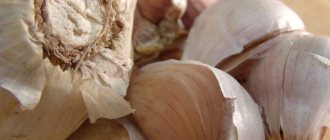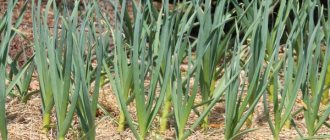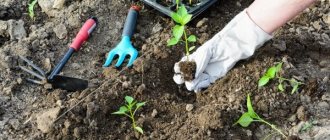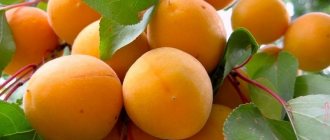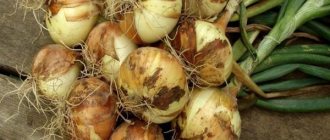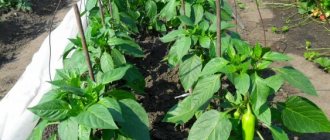Onions are one of the most popular vegetables in Russia. It is difficult to find a summer cottage that does not have a bed with this plant. The place for planting vegetables should always be prepared in advance, and therefore it is always important to pay attention to what to plant onions after. There are vegetables that enrich the soil with the substances necessary for a given crop, and there are also those that make the substrate poorer. The growing rules are not at all complicated - after studying them, anyone, even an inexperienced summer resident, will be able to reap a colossal harvest.
Soil fatigue: causes
If the same crop is planted in the same place year after year, so-called soil fatigue occurs.
This is expressed as follows:
- due to regular consumption of the same nutrients from the soil, it becomes more scarce and an imbalance occurs;
- identical plants are affected by the same pests, which already adapt to this place, lay larvae in the soil and their number increases from year to year. In addition, the soil also absorbs insecticides, with which gardeners fight insects, and therefore it becomes toxic;
- spores of viral diseases and fungal infections also persist in the soil;
- the substrate accumulates colins - root secretions (sugars, organic acids, hormones, enzymes, phenol compounds);
- the soil acidity level changes.
Onion bed
Important! Some cultures are OK with the accumulation of colins, but for most it is unacceptable. They begin to become smaller, their growth and development slows down.
What soil and conditions are needed for onions?
Sandy and loamy soils are best suited for onions. In the first case, growth and development occurs faster, it is advisable to grow onions on feathers, and on loam the heads will be larger and more pleasant to taste.
Clay soils are not suitable for growing this crop, as dense soil will interfere with the development of the plant. But this problem can be solved very simply: you need to add sand to such soil to loosen it, and you can safely start growing any type of onion.
The acidity of the soil is also of great importance; it should be in the range of 6.4 to 7.9 pH (neutral or slightly alkaline). If the soil is overly acidic, the following components are added to it:
- slaked lime;
- chalk;
- dolomite flour;
- ground limestone.
Important! The soil on which the vegetable will be grown must be nutritious. To enhance the effect, organic fertilizers are used. Only fresh manure is not suitable.
Leek feeding
Does the earth need to rest after the bow?
The following year after onions you can grow:
- Legumes;
- Pumpkin;
- Solanaceae;
- winter crops and root crops.
These plants will not accept all the pathogens that have accumulated in the ground; the composition of the soil is ideal for them.
What can you plant after onions next year:
| Perfect fit |
|
| Landing allowed |
|
| Absolutely not suitable |
|
Review of garden predecessors for potatoes
Favorable predecessors are considered:
- Zucchini does not change the structure of the soil. It remains loose clean, in addition with minimal wasting.
- Onion is considered a natural doctor. The culture disinfects the soil, destroys pathogenic microorganisms, and repels pests.
- Cabbage and potatoes are good neighbors. The crops do not have common diseases or pests. It is even useful to plant potatoes in a bed after cabbage, which has been infected with fungi, to heal the soil.
- The pumpkin covers a large area with its vines. It leaves behind a weed-free area with loose soil. Unextracted pumpkin roots are safe and will serve as fertilizer for potatoes.
- Cucumbers are usually used for alternating plantings of above-ground and root crops.
- Garlic repels pests from the ground, destroys bacteria, and slightly depletes the soil. After this, you can successfully grow potatoes.
Good predecessors of potatoes
Bad predecessors are:
- Tomatoes and other nightshade crops. After them, the soil is completely depleted, there is a lack of potassium, phosphorus, and nitrogen. Common pests and pathogens will remain in the soil.
- Peppers absorb all nutrients from the soil. They leave behind many diseases. Planted potatoes are more likely to become infected with late blight. Sweet peppers are considered the worst predecessors of all types.
Strawberries should be added to this list. The berry crop has a developed rhizome that intensively absorbs nitrogen and potassium from the soil.
Advice! Sunflower greatly depletes the soil, but is considered a good neighbor for potatoes. After it, you just need to liberally fertilize the soil with organic matter.
Then plant onions of various varieties
The agricultural technology of this vegetable does not cause any difficulties. It only needs proper watering, weeding, loosening and fertilizing. But it is also worth taking into account the crops that grew before him in the garden.
Then plant the onion on the feather
Onions are most often planted for feathers in the fall, and sets are most often planted. It is preferable if any green manure plants, except clover, grew in this place. Cereals, legumes and mustard are perfect. Fast-growing plants like itself, for example, radishes, lettuce, and herbs, are also suitable.
Then plant the onions on the turnips
Turnips can be planted after green manure plants, which enrich the soil with nitrogen and draw all the nutrients hidden deep inside to the soil surface. A good large harvest is obtained if the plant is planted after legumes.
Onion variety
After what crops should vegetables be planted before winter?
You can grow this vegetable before winter after many vegetables. After which it is best to plant onions before winter:
- mustard;
- beans;
- beans;
- rape;
- rye.
They make the soil looser and enrich it with nitrogen due to small nodules located on the roots. After them, winter onions will give maximum yield. Such plants have a powerful root system, penetrating into the deepest layers of the soil and pulling out all the nutrients from there. They enrich the upper layers of the soil with these substances, from which onions receive the necessary food.
The following predecessors are also suitable for winter plantings:
- tomatoes;
- cabbage;
- cucumbers;
- salad.
You can plant winter onions after potatoes. However, in this case there is a high risk of infection with some diseases of the predecessor.
Attention! If you choose potatoes as a predecessor, you need to make sure that they are absolutely healthy.
What vegetables should you not plant onions after?
You cannot plant vegetables before winter in those beds where representatives of this family were already growing. If crop rotation is not observed, the land will be depleted, the same substances will accumulate in it, as well as pathogens that will damage the crop. There will also be a sharp increase in the likelihood that the seedlings will be infected with onion fly, which causes irreparable harm to the crop. Planting after such plants as:
- alfalfa, red clover;
- root parsley;
- parsnip;
- radish;
- carrot;
- radish.
Over the course of a season, they pull huge amounts of nutrients from the soil. And for growing onions in general, in particular for winter plantings, the amount of nutrients in the soil is very important.
Important! When planting in open ground in central Russia (including the Moscow region), it is necessary to cover the beds with winter plantings with spruce branches or special garden breathable material. They can be opened in the spring, as soon as the snow melts.
When should you not sow tomatoes?
You should not plant tomatoes in place of other members of the nightshade family. These include: peppers, potatoes, eggplant and physalis. You should be careful with plants that are susceptible to the same diseases as tomatoes.
The soil in which potatoes grew contains virtually no nitrogen. This will have a detrimental effect on the growth of tomatoes. You will have to frequently fertilize the soil, which is not only expensive, but can also lead to a poor harvest, since it is very difficult to distribute the feed evenly. Excess fertilizer, as well as deficiency, is harmful to plants.
See also
The best varieties of tomatoes for growing in the Leningrad region for greenhouses and open ground
Read
In addition, bacteria and parasites from potatoes can spread to tomatoes. Small potato fruits and plant particles often remain in the ground after harvest. Parasites also overwinter in the soil along with the vegetable. Next season, it is better to choose crops that are resistant to pests and diseases of nightshade vegetables.
After planting potatoes, the most likely occurrence of parasites such as:
- Colorado beetle;
- mole cricket;
- wireworm
Among the diseases, late blight is possible.
Having sowed tomatoes after potatoes, the farmer will spend a lot of time, effort and money on fertilizing the soil and fighting parasites, but there will still not be a good harvest of tomatoes.
Is it possible to plant tomatoes after strawberries? Strawberries are a perennial plant; they are replanted when the beds become old or the harvest deteriorates, which indicates depletion of the soil. Is it possible to grow good tomatoes in this place?
No, tomatoes should not be planted after strawberries. The reason is the same as in the previous case: strawberries consume a lot of nitrogen. The soil should rest for a season or more before planting any vegetables.
If it is not possible to take a break, you need to thoroughly prepare the soil:
- dig up;
- clear of weeds;
- dry the soil;
- saturate with organic fertilizers;
- add nitrogen and mineral complexes with potassium.
After planting, tomatoes need regular feeding. The same preparation must be carried out if strawberries were previously grown on the site.
What to plant after onions in the same season
Onions are most often harvested in August, and sometimes earlier (early ripening varieties), so to prevent the garden bed from being empty, you can plant something else immediately after. What can be planted after onions in the same season:
- A salad that will always delight you with freshness and will fit on any table. The bag of lettuce should have a mark indicating that it is suitable for summer sowing.
- Early ripening cabbage, most often these are hybrid varieties with ultra-early ripening.
- Early ripening varieties of beets and carrots, which are not suitable for long-term storage, but will delight you with their juicy fresh fruits, ripened in early autumn.
- Radish, which should not be too deep into the soil when planting late after onions.
- Radishes, for which planting at this time is ideal due to the shorter daylight hours. When planted in spring, it can go into arrows, and the second half of summer is very suitable.
- Dill and other greens that you always want to have fresh on the table.
Symbiosis with strawberries
How to alternate plants correctly?
In order to properly alternate plantings and create a rational crop rotation scheme, it is important to know which family a particular plant belongs to. Because representatives of the same family, as a rule, suffer from the same diseases and are attacked by the same pests. For example, after lettuce and root celery, root rot pathogens often lurk in the soil. Cabbage can be attacked by cabbage fly, sometimes heads of cabbage are affected by clubroot, after which it is undesirable to plant the vegetable in this place for about 6 years. Thus, it is impossible, for example, to sow dill to replace carrots. These crops belong to the same family - Celery.
Interestingly, crop rotation should be observed not only when growing vegetables, as many mistakenly believe. If you think that flowers and medicinal plants cannot be “relatives” of vegetables, then you are mistaken. How can they! For example, tulips and slime onions are almost siblings. So, if you have laid out a bed in place of a flowerbed, this does not mean at all that vegetables will grow well in it. It is important to choose the right successor cultures.
Especially for you, we have compiled a table of the families that different cultures belong to.
| Family | Culture |
| Asteraceae (Asteraceae) | Artichoke, aster, dahlia, calendula, cosmos, daisy, oat root, dandelion, tansy, sunflower, rudbeckia, lettuce, chicory, scorzonera, yarrow, chrysanthemum, zinnia, string, tarragon, echinacea |
| Legumes | Beans, vetch, peas, lupine, soybeans, beans, lentils |
| Buckwheat | Buckwheat, rhubarb, sorrel |
| Brassicas (cruciferous) | Rutabaga, daikon, cabbage (white cabbage, Brussels sprouts, Chinese cabbage, kohlrabi, red cabbage, Beijing cabbage, Savoy cabbage, cauliflower), katran, watercress, leftover, mustard greens, lobo, radish, radish, turnip, horseradish |
| Onion (lily) | Begonias, onions (lamb, fragrant, multi-tiered, leeks, onions, rocambole, slime, shallots, chives), lilies, tulips, wild garlic, garlic |
| Chenopodiaceae | Decorative quinoa, chard, beets, spinach. |
| Solanaceae | Eggplant, belladonna, potato, nightshade, pepper, petunia, tobacco, tomato, physalis. |
| Celery (umbrella) | Anise, chervil, coriander (cilantro), carrots, parsnips, parsley, celery, caraway, dill, fennel. |
| Pumpkin | Watermelon, crazy cucumber, melon, zucchini, crookneck, lagenaria, luffa, melotria, momordica, cucumber, squash, steppe, tladiantha, cyclantera, chayote, echinocystis. |
| Lamiaceae (Labiaceae) | Basil, hyssop, marjoram, lemon balm, peppermint, savory. |
The best neighbors, what to plant nearby
The best neighbor in the garden is strawberries. They have an excellent symbiosis, as a result of which strawberries develop and grow. Its berries become larger and sweeter. But after it it is not recommended to plant this vegetable. In addition to strawberries, onions get along well with carrots, celery, lettuce and beets.
Union with carrots
Interesting! Onions next to carrots is a classic combination. Carrots cope well with the onion fly, which often affects the vegetable crop. This type of planting will not require the use of insecticides.
It’s amazing how the harvest of such a seemingly simple plant can depend on its predecessors and influence its followers. It is very important to choose the right plants growing before and after, as well as allies. Then the results will be able to exceed even the wildest expectations. Even beginners, having studied a number of simple rules, will be able to grow a crop that will be the envy of experienced gardeners who do not know them.
What to do if potatoes are planted after a bad predecessor
The limited area of the plots does not make it possible to maintain normal crop rotation. Potatoes are often planted after bad predecessors, such as tomatoes. To provide the culture with proper conditions, the following actions are taken:
- Urea, superphosphate, and potassium fertilizer are added to the soil. Fertilizers help restore substances absorbed by the predecessor.
- Potatoes are treated with insecticides and fungicides up to 4 times per season. Preventive measures help to avoid the occurrence of late blight and the proliferation of pests.
- About 2 weeks before harvesting, the tops are torn off, taken away from the garden and burned. The dug up tubers are in no hurry to be lowered into the cellar. First, they are thoroughly dried in partial shade.
The efforts made will help you get a harvest that will last until the next season.
The listed features of crop rotation are advisory in nature to answer the question, after which you can plant potatoes next year, since small plots limit the action of gardeners. However, it is advisable to try to properly plan the beds to increase crop yields.
Planting onions before winter
Landing dates
There is no need for haste here, so we won’t rush into planting winter onions. It is optimal to place it on the plots about a month before the start of the real frost (otherwise it will begin to grow, how it will gain strength, and then what to do with it?). But in fact, in the case of onions, it is advisable to meet the deadlines and you only have to rely on the thermometer and weather forecasters.
Let's take the middle lane as an example. Experts write that the optimal time for planting onions before winter here is from the 5th to the 20th of October. Imagine a 15-day range of deadlines! More than two weeks. And why? But because the weather is very changeable and capricious, and during this period of time it can change dramatically. We need to somehow plan to plant the onions so that all planting is completed three weeks before the soil freezes completely. It is clear that this period is different in each region, you can only rely on the weather forecast, for example, if for two or three days the temperature drops to +5 and does not rise anymore, then you can completely start planting onions. During my life I observed different things: it happened that on the Intercession, that is, already in mid-October, such snow fell that it no longer melted, and it happened that even a month after the Intercession there was still no snow. Let’s summarize: don’t rush, monitor the weather forecast, choose the optimal time so that the onion not only does not have time to form roots, but also does not show the tiny tips of the leaves from under the soil, because then you can’t count on a good harvest. And if it doesn’t form any roots in the soil at all and sits until spring exactly in the same form as it was planted, then that’s also nothing good. Ideally, the roots should begin to grow, and the onion should come to life and immediately freeze (and not freeze) until spring.
A covered bed with onions planted before winter. herbie
Preparation of planting material
So, we have sorted out the soil, the planting date is approaching, it’s time to start preparing the onion planting material. This is a mandatory and necessary event and cannot be ignored. Why do they sort onions before planting? In order to remove all damaged and diseased bulbs from the overall batch, the onions are then usually divided into four batches, which are entirely dependent on their size. Typically, the first category includes bulbs whose diameter is from a centimeter to one and a half, the second category includes bulbs with a diameter from one and a half to three centimeters, and a separate selection must be made into which the bulbs whose diameter is considered to be quite large - more than three centimeters - are placed. Onions that do not fall into any category, that is, very small ones (less than a centimeter), are called wild oatmeal, and are placed in separate boxes.
Onion sorting
This sorting of onions is important in order to obtain uniform plantings. How you sort the bulbs is how you plant them: this is not a trivial calculation of how many large bulbs you have, how many medium ones, how many small ones, and so on.
Planting onions
Before planting, I would advise digging up the already selected area, which we have described above, with a shovel full, adding 5-6 kg of humus or compost per square meter, as well as a handful of wood ash. Next, the area needs to be perfectly leveled and grooves made five centimeters deep, in which the bulbs will be planted.
However, not all onions are planted according to the same principle. For example, it is advisable to plant wild oatmeal, a typical winter onion, to a depth of two, maximum three centimeters; it is not worth burying it deeper at all.
It is better to leave a distance of six or seven centimeters between the bulbs, and arrange the grooves themselves so that the distance between them is equal to one and a half ten centimeters. Next, it remains to place the onion vertically, lightly squeezing it with your fingers, sprinkling the soil and leveling it.
By the way, we described the method of planting onions in furrows, but this does not mean that they can only be planted this way and not otherwise. It is quite possible to plant onions in holes (for example, using the square-nest method, beloved by many), the planting principle is the same.
In the future, it is advisable to water the soil in the beds where winter onions are planted well and ensure that the soil is moist before the onset of frost (before covering).
Onion braids. moestuinweetjes
Rule No. 2 - selection of planting material
According to rule No. 2, it is necessary to take a responsible approach to the choice of planting material. A set is a small onion that was grown from nigella seeds in the previous season. It is divided into three fractions depending on size:
- The 1st fraction is the largest, includes bulbs up to 5 cm in diameter;
- 2nd fraction – planting material up to 3 cm in diameter (the best and gives the greatest yield);
- 3rd fraction – sowing up to 1.5 cm in diameter (gives a good harvest only when sown in winter).
When choosing planting material, be sure to remove dried, rotten, moldy specimens. They can infect the entire garden bed. It is also worth calibrating before preparing for planting - sorting all the bulbs by size.
The second secret of growing is choosing a suitable onion variety for planting in the spring (depending on climatic conditions, it can be early, mid-early, mid-season and late-ripening).
The best varieties of onion sets for planting in the spring are those that are guaranteed to have time to grow and ripen as long as the weather in your region allows. Here are some decent varieties that are suitable for most regions of our country:
- "Alpha" - round bulb up to 120 g. with dense brown scales, perfectly stored, pleasant pungent taste, ripens in 70 days;
- “Alvina” - ripens 80–90 days after planting, has a red-violet color on the outer scales, a pink-violet color on the internal structures, can be stored for 6 months, head weight up to 150 g;
- “Hercules” - bulb weight up to 250 g, drought-resistant, ripening period - 80 days, golden outer scales and snow-white inner pulp;
- “Globus” produces light brown, smooth bulbs weighing up to 200 g, dense, well stored 80 days after planting;
- “Carmen” - red color outside and inside, bulb weight up to 12 grams, ripening period - 75 days after planting, perfectly stored in a dry place all winter;
- “Corrado” - high yield and excellent shelf life for 12 months, the color of the outer scales is brown, ripening period is 75 days;
- “Red Baron” - semi-sharp taste, resistance to arrow formation even when planted early in open ground, red color, ripening period - 70 days;
- “Rumba” is a golden, early-ripening onion that produces impressive yields;
- “Stardust” is a white onion that ripens in 60 days, has a salad purpose, and is poorly stored in winter;
- "Sturon" - ripens in 65 days, tolerates frost on the soil, is well stored;
- “Chalcedony” mid-season for winter storage, bulb up to 150 g, semi-sharp taste, brown scales, white cream pulp;
- “Centurion” is a very sharp egg-shaped onion with brown colored scales and large yields due to the massive bulb (it grows up to 200 grams);
- “Stuttgarter Riesen” is a well-known variety for winter storage, ripens in 90 days, has a golden color and a rich, pungent taste;
- “Ellan” - gives a rich harvest, but is poorly stored, the bulb is elongated, brown, weighing up to 300 g.
Tips for choosing a variety: give preference to those types that are more expensive in the store. For example, regular golden onions cost 18 rubles per kg, and red onions cost 38 rubles per kg. Obviously, it is more profitable to grow the red variety, and it is better to buy the regular one. When choosing in a store, do not take a discard - nothing good will grow from it. Buy planting material only from trusted suppliers, otherwise you will waste your money, time and your nerve cells.

